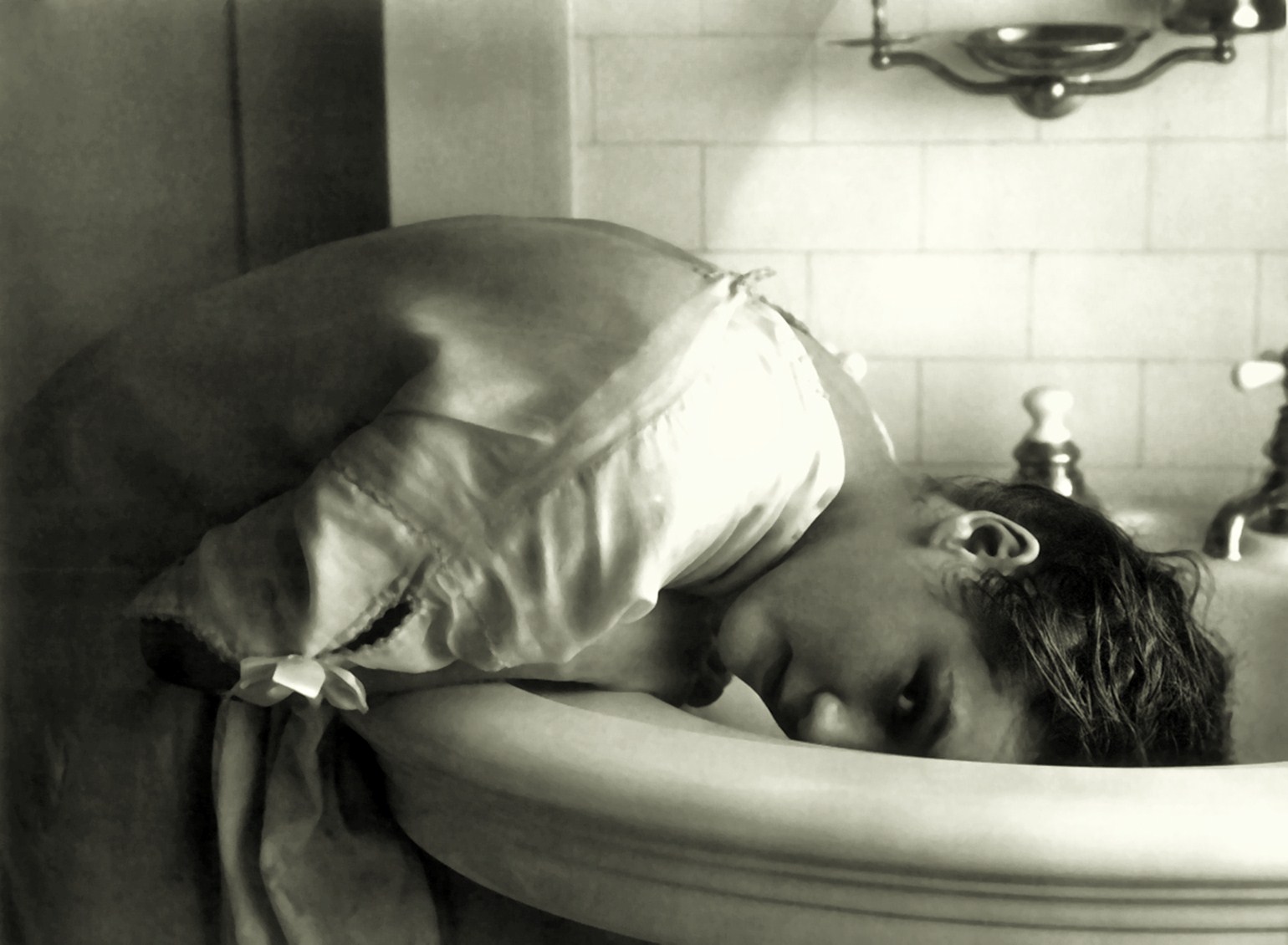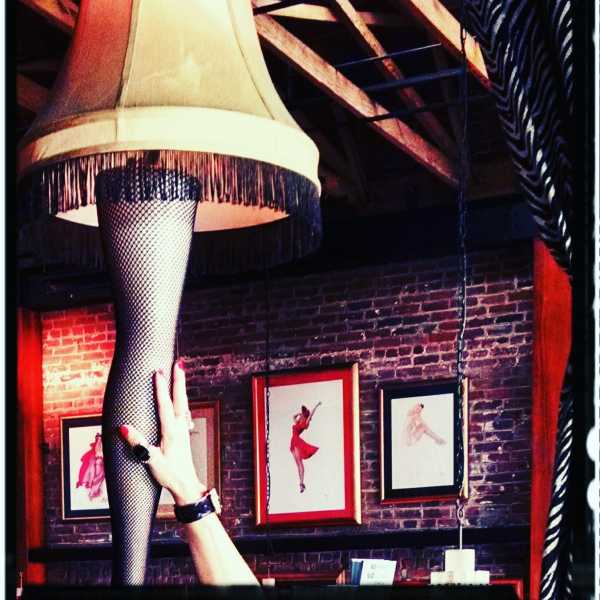
Jennifer Devore
Brooks Brothers and Prada: The Greater Gatsby
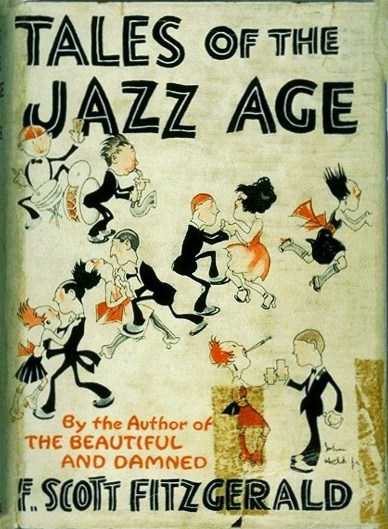 If one film has recently pinged my annoyingly particular radar screen with a single sparkly note, it is The Great Gatsby. Thrilled at the prospect of a big-budget feature finally dedicated to the art of storytelling, eschewing the long-overdone, over-hyped, cheesy SFX genre, I instantly started swinging my vintage Whiting & Davis handbag round my wrist in anticipation. Just as my tootsies started to join in the fun, my Mary Janes ready to Charleston, I learned Baz Luhrmann's The Great Gatsby of 2013 is in 3-D. Zowie!
If one film has recently pinged my annoyingly particular radar screen with a single sparkly note, it is The Great Gatsby. Thrilled at the prospect of a big-budget feature finally dedicated to the art of storytelling, eschewing the long-overdone, over-hyped, cheesy SFX genre, I instantly started swinging my vintage Whiting & Davis handbag round my wrist in anticipation. Just as my tootsies started to join in the fun, my Mary Janes ready to Charleston, I learned Baz Luhrmann's The Great Gatsby of 2013 is in 3-D. Zowie!
Be clear, yours truly is no Luddite. I adore and applaud progress, when necessary. If you've read my novels and regularly read my geek-culture articles and blog posts, you shall well know I embrace the Zeitgeist. Love me some Zeitgeist! Still, F. Scott Fitzgerald's literary masterpiece of self-doubt, jealousy, betrayal, murder, manipulation and heartbreak has zero need for 3-D confetti.
Still, how could a jazzy sweet patootie such as myself pass up this sumptuous, vicarious, visual fête of champagne, glitter, diamonds, feathers and fishnets? Surely the story remains in tact; certainly no main chacarters have been sidelined or their magnanimity diminished. So, I agreed to plop down my cabbage and see it, despite the threat of such aggressive progress ... then, I read Rex Reed's brutal and scorching review. Though I am not generally given to paying much mind to film reviews, Reed's warning left me aghast and faint-hearted, stunned by a gilded sense of foreboding. Reed proffers a glimpse into a film so ruthlessly bad that, were I to see it I might turn to stone, like a victim of Medusa, my face frozen in perpetual horror as a Duesenberg hood ornament flies at my powdered face. I had to rethink my decision to shell out said-cabbage. Then, happily, along came new information about the costume design.
The 1920s marked an age as pivotal and dynamic as our own technological age. America was shifting from an agricultural existence to an industrial one as feverishly and unabashedly as a drunken, desperate, last-hurrah, Labor Day dock party in the Hamptons. Single girls were moving from family farms to the big cities in droves, ready to pop their champagne corks and break free from the wasp-waist whalebone corsets and high-neck lace blousons of their Victorian and Edwardian grandmamas. No more milking the cows and darning Pa's socks. The Jazz Age was nigh and it was America's well-earned, Naughty Weekend: sex, jazz and, despite a decade-plus of Prohibition, booze. (Step off, 1960s. You old hippies never even came close.) It was as though we knew the Thirties were coming with it's Great Depression, Dust Bowl, dowdy Red Cross shoes and the distant knell of WWII. It was time to party and party hard. So, ask any twenty-something, what's the best way to party harder than your grandparents ever did, annoy your elders and distance yourself from your parents? Attitude, excessive booze and, of course, style.
and unabashedly as a drunken, desperate, last-hurrah, Labor Day dock party in the Hamptons. Single girls were moving from family farms to the big cities in droves, ready to pop their champagne corks and break free from the wasp-waist whalebone corsets and high-neck lace blousons of their Victorian and Edwardian grandmamas. No more milking the cows and darning Pa's socks. The Jazz Age was nigh and it was America's well-earned, Naughty Weekend: sex, jazz and, despite a decade-plus of Prohibition, booze. (Step off, 1960s. You old hippies never even came close.) It was as though we knew the Thirties were coming with it's Great Depression, Dust Bowl, dowdy Red Cross shoes and the distant knell of WWII. It was time to party and party hard. So, ask any twenty-something, what's the best way to party harder than your grandparents ever did, annoy your elders and distance yourself from your parents? Attitude, excessive booze and, of course, style.
By the Roaring Twenties, gone were the tight-laced, buttoned-up, sartorial standards of the wet smacks whom came before this Jazz Age of rowdy pips. Enter stage left: swishy fringe, fouffy feathers, dyed furs, beaded minis, overflowing accessories, unstructured waists, mannish bobs and scandalous hemlines showing off all those great getaway sticks capped with shiny kitten heels, clearly not cobbled for dour farm girls and stay-at-home bankers' wives. Hit the road, Gibson Girl. Hello, Dolly! The middle class was climbing down from the hay lofts and with their new lives came a desire for kippy threads. Brooks Brothers, already a hundred-year old establishment, was there to answer the call, even if their price points have never been solidly middle-class.
If anyone knows Jazz Age dressing, it's our American Brooks Brothers. If anyone knows flash, soiree style, it's the Italian atelier of Prada. If anyone knows production design and costuming it's frequent Luhrmann collaborator, fellow Aussie and BAFTA- and Oscar-winner Catherine Martin (Moulin Rouge, Romeo + Juliet, Strictly Ballroom). When I learned these powerhouses of the posh and panache were responsible for Luhrmann's eye-candy, it was clear I needed to, as I said, rethink this spectacle.
In an instant, I knew Brooks Brothers was involved. When striped, regatta blazers, straw boaters and striped ties make the scene, it's clear they're involved. In fact, the nearly-200-year old haberdasher has been involved from the get-go, even outfitting The Great Gatsby author F. Scott Fitzgerald himself, ordering directly from their catalogs throughout the Twenties. His devotion to the outfitters helped make popular various styles, including their signature button-down, attached-collar shirt.
Founded in New York City in 1818, the same year the White House reopened after having been torched by the Brits during the War of 1812, and the same year the U.S. Congress decided our flag would have thirteen red and white stripes and twenty stars, Brooks Brothers is America's oldest clothing retailer and first ready-to-wear emporium. Spanning nearly the entirety of our country's existence, Brooks Brothers is no drifter when it comes to bespoke clothing for the upper-crust, making history, notoriously as well as famously.
President Abraham Lincoln, a loyal Brooks Brothers customer, was bestowed a special coat upon his second inauguration, the lining embroidered with an eagle and the inscription "One Country, One Destiny". (In fact, Brooks Brothers has outfitted thirty-nine of our forty-four U.S. presidents. George W. Bush might be one of the hold-outs, opting for J. Press as his outfitter, another Old School, upscale, but Yale-founded, New England-based clothier.) Eerily, Lincoln was shot at Ford's Theater wearing that same coat two tragic weeks later. Still, life goes on and along the way, Brooks Brothers quietly held history's hand.
Charles Lindbergh, unable to carry much luggage on his transatlantic flight, borrowed a coat upon his Paris landing, a Brooks Brothers belonging to the American ambassador. Clark Gable wed an aristocrat in B.B., his custom suit of choice, as no one else could fit his impressive physique of a 44" chest/32" waist. Legend has it pop artist Andy Warhol spent his first paycheck on a B.B. No. 10, white button-down. Perhaps, most impressive of all, Kermit the Frog owns at least one tiny, bespoke, amphibious tuxedo.
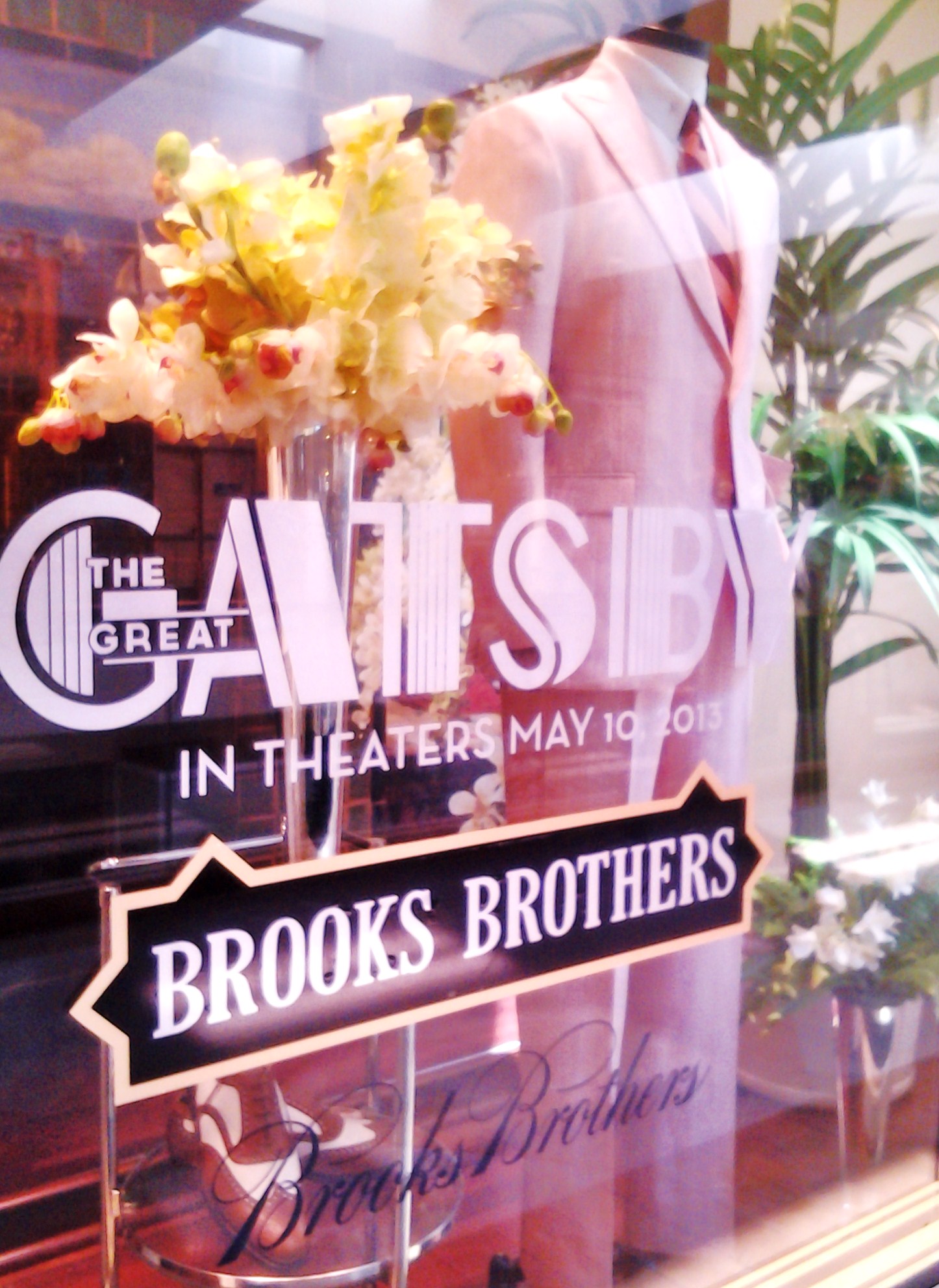 If you think Brooks Brothers is a bit blue-blood and starched-collar for this tacky and gauche film business, you are correct. Still, Brooks Brothers' vice-president of global relations, Arthur Wayne told Adweek, "We’re not a highly promotional brand. But, we do it when it feels right.” Considering Brooks Brothers was at the original party with Fitzgerald himself, one imagines it does feel right. Though they are also not usually known for film tie-ins, they are sporting a raw-ther nifty collection of summer togs for the lean of frame, beautiful of face and hearty of cabbage: Bright Young Things.
If you think Brooks Brothers is a bit blue-blood and starched-collar for this tacky and gauche film business, you are correct. Still, Brooks Brothers' vice-president of global relations, Arthur Wayne told Adweek, "We’re not a highly promotional brand. But, we do it when it feels right.” Considering Brooks Brothers was at the original party with Fitzgerald himself, one imagines it does feel right. Though they are also not usually known for film tie-ins, they are sporting a raw-ther nifty collection of summer togs for the lean of frame, beautiful of face and hearty of cabbage: Bright Young Things.
Where posh is concerned, Prada wrote the travel guide. Founded in 1913, Prada began its couture trek as a leather goods purveyor: steamer trunks, luggage, beauty cases, porte-monnaies, portmanteaux, handbags and a variety of luxury accessories. By 1919, just about the time Gatsby's sycophantic circle of friends were swinging from his chandeliers, Prada was appointed an official supplier to the Italian Royal Family.
As Egyptian travel became all the rage, thanks to Howard Carter, Lord Carnarvon and their 1922 discovery of Tutankhamun's tomb, Prada jewelry cases and resort bags saw action sailing up and down the Nile on Agatha Christie-style excursions. Queen Mary's polished decks were littered with Prada steamer trunks in the 1930s, many of those marked "P.O.S.H.": the abbreviation stamped on luggage belonging to passengers with top-flight rooms. What defines the best room on a cruise ship? The view, of course, sailing HMS Queen Mary in and out of Southampton and Dover: Port Outbound, Starboard Homebound, or P.O.S.H.
By 2012, four very posh gentleman donned their Jules Verneesque best as Prada reached back to Victoriana and embraced fashion's current obsession of steampunk. View Gary Oldman, Garrett Hedlund, Jamie Bell and Willem Dafoe in some very fetching, very attractive glad rags.
Before Brooks Brothers and Prada, the most recent posh designer to tackle the mighty task of Fitzgerald frippery was the legendary Ralph Lauren, dressing the ever-dapper, butter-and-egg man, Robert Redford in The Great Gatsby of 1974. Well done, Ralph. This time, Leonardo DiCaprio gets the swanky, onyx cufflink treatment, along with Tobey Maguire in shawl neck sweaters and deck shoes, looking a bit like he borrowed Father's cruise wear and unsure how to wear it. That could be the problem. One does not wear Brooks Brothers; one sports it. If one cannot, one should not.
According to more than a few critics, come awards-season, the special effects, acting and directing may just have to sit in the rumble seat of this Duesy. Brooks Brothers is driving Miss Daisy and Miuccia Prada is riding shotgun, with costume designer Catherine Martin sitting on her lap. This trifecta of fashion may be what pitches this pony over the finish line. To boot, whilst Jay-Z's hip-hop-infused Jazz Age soundtrack may be off-putting to purists, it seems a welcome addition to this dame. After all, modern-day hip-hop finds its roots in Twenties jazz and, considering the fashion may be the star of the show, one must have some high-kicking, free-swinging, jazz-hands tuneage to accompany those svelte Flappers and slick-haired Big Spenders, all togged to the bricks. As with many things in life, it really don't mean a thing if it ain't got that swing.
Yep, you shred it, Wheat. Looks like I just might have to hand over my cabbage to Mr. Luhrmann after all.
- prohibition
- south
- coast
- plaza
- store
- window
- display
- jazz
- age
- style
- prada
- brooks
- brothers
- american
- oldest
- clothier
- retailer
- 1818
- ready
- to
- wear
- abraham
- lincoln
- shot
- fords
- theater
- coat
- arthur
- wayne
- f
- scott
- fitzgerald
- great
- gatsby
- rexc
- reed
- review
- bad
- baz
- luhrmann
- catherine
- martin
- ralph
- lauren
- designer
- designers
- high
- end
- charles
- lindbergh
- bespoke
- kermit
- frog
- andy
- warhol
- no. 10
- oxford
- posh
- origin
- meaning
- phrase
Respect, Nine Old Men: Classic Disney Cartoons

Hey, kids! It's me, Miss Hannah Hart, your friendly ghostdame of The Del. Just skipping about the Roku this morning in my luxe Resort Suite at the Hotel del Coronado this gorgeous summer’s day ... and what did I find? Disney is giving up the goods: Classic Mickey & Friends cartoons!
I watched each and every one of Walt’s mini-flickers when they originally came out in theaters as early as the 1920s. Even after my unfortunate demise in 1934, I hightailed my haunted self into theaters well up into the 1960s. (After that, theater-going became a little sketchy in the 1970s, especially in downtown San Diego, Boston and New York. Icky and sticky.) Trust me, being a ghost up through the 1960s was much easier than it is now (far less crowded); plus, folks dressed a might better when going to the pictures. (Remember heels and hairbrushes, dames?) Disney animated shorts just filled up the dark, like a gentle flood of colour accompanied by the lulling sound of happy fantasy and storytelling. There’s nothing like a Disney cartoon.
Cecil B. DeMille, M.F.C.C., or Why Change Your Wife?
Why Change Your Wife? (1920) is a matrimony “comedy” by Cecil B. DeMille. There are two possible responses to a movie like Why Change Your Wife?: mockery and anger. I’ve never been much of a one for laughing at bad movies.
- Helen Geib, Commentary Track
So above goes the opinion of one gal. So here goes the beauty of the American condition: free to agree to disagree. I am thankful, however, that Ms. Geib chose the phrasing of possible responses, for many a critic will oft claim his view as gospel. Thank you, Helen, for leaving open this small crack in the patio door. Like a stray cat, or the Obama family, I shall take this wee opportunity, dash inside and have my way with the furniture until I am shooed from the premises.
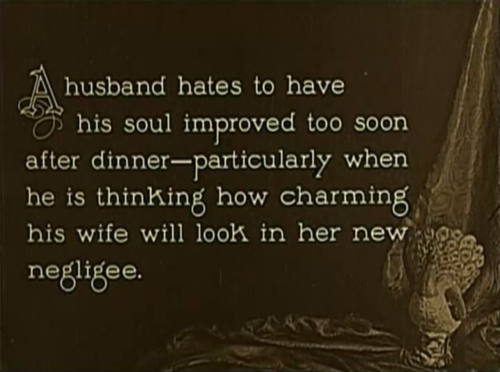
Why Change your Wife? is a viable comedy: from Chaplinesque pratfalls to the classical, stage requirements of the theater. Why Change Your Wife? (1921 Famous Players-Lasky Corporation/Paramount Pictures Distribution), directed by Cecil B. DeMille and written by (in alphabetical order) Sada Cowan, William DeMille and Olga Printzlau, offers a glitzy, stocking-and-gartered, Old Hollywood-styled, silent-era film of the alpha relationship. Like a banshee from the turreted rooftops, this sex farce shrieks the foibles of men and women, husbands and wives, whilst whispering from those same turrets those of mother and child. Mother and son, to be more accurate; for, that is what lies at the foundation of this sociological flicker. Shakespearean in its storyline, Freudian in its subtext, this follow-up to DeMille's 1919 Don't Change Your Husband posits, and eventually answers, an common, albeit underlying and queasy quandary ... Do men want to marry their mothers? Though most prefer to build a Home Depot over all that and let it remain buried, there are as many responses to said-quandary as there are men, and mothers.
Synopsis: Robert and Beth Gordon (Thomas Meighan and Gloria Swanson) are married. Period. He heads to work, she stays home. He tries to shave each morning, she hogs the mirror. He likes fox trots, she prefers classical. He loves his dog, she sees walking disease. He likes to dance, she likes to read. He buys her lingerie, she finds it disgusting.
In a moment of concession, Beth tries on the new negligee, just hours earlier modeled in-store by a young nymph named Sally. Beth, unsure of how to rock such gear and Robert, clueless as to how to help her rock it, tries his best. Do you know, somehow in the shop, it looked - thinner. Brilliant, Bob. Brilliant. Still a sport, she tries to get in the mood with the same face and enthusiasm one gives while cleaning hair from a shower drain. Quelle surprise, she just can't do it. You expect me to share your Oriental ideas? Do you want your wife to lure you like a - a - Oh, why didn't you marry a Turk?
Robert should have known better. All of her puritanical tendencies are clearly evident; she wears thick glasses and her hair rolled up. Duh. Beth finds most every habit of Robert's vile: smoking, eating, drinking, dancing, lusting. At every turn she not only lets him know of her disapproval, but she takes the opportunity to educate him and change his boyish charms, certainly the dangerous charms which lured her to him originally. Robert, why will you play that awful, physical music? Try to cultivate your taste, dear! Enter sexy, jazzy Sally.
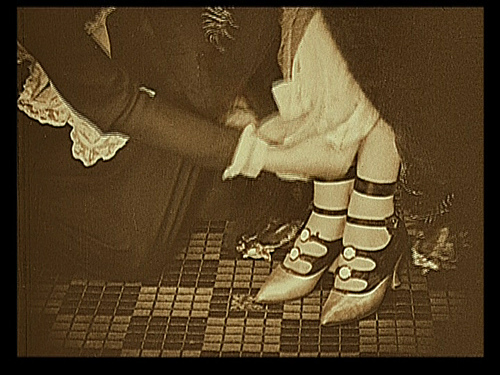
He likes Sally, Sally likes lingerie and knows exactly how to rock it. Sally likes smoking, jazz, dancing, parties, stockings, feathers, rhinestones, shoes with kitten heels and best of all booze! The outlook is clear and a million, as pilots say. Bob skeezes about with Sally, Beth smells Sally's lurid Persian Nights perfume on Bob one night, Beth files for divorce. Bob is okay with that and quickly weds Sally. Even the dog is happy, for a bit.
The day the divorce is final, Beth's Aunt Kate takes her shopping. Surely a new frock will heal her pain. In a scene right out of Cougartown and with mere curtains for dressing room partitions, the jazzy gals next door overhear Beth's woes, and she their analysis of said-woes. Feeling pity for her, they also conclude she may have brought it on herself, judging she just wouldn't play with her husband and dresses like his aunt, rather than his wife. A sting makes a mark and she realizes perhaps she has become a bit mumsy and let herself go. Nothing like than loosening the hair, losing the glasses and shimmying into some embroidered stockings and a backless, sleeveless, transparent and indecent number to let the world know how Beth got her groove back.
Thank goodness for coincidence, for soon Robert gets a gander of Beth and her smashing, previously unseen gams at a swanky resort. Beth bought the very bathing suit the dressing room gal had tried on that fateful day, recalling the sage words of the shop clerk: If a girl can wear a bathing suit like this - it's her duty to do so! Pity Sally doesn't look as good this day. In fact, as Beth lounges poolside in her scandalous suit and is wooed by a dozen dapper dandelions, Sally has become a drag and a plain old nag. Taken to correcting Bob's posture and manners in public, she doesn't even love his dog anymore. She's hogging the mirror now and, funny enough, the new Mrs. Gordon appears shorter, dumpier and duller than the shiny new ex-Mrs. G. Naturally, Robert notices all of this. The liberated ex and the man-toddler Robert, tired of his new toy, fall in love all over again.
:End Synopsis
Sally frets briefly at the resort breakup. Happily for her though, she spies a yummy new target and cries the battle charge that would do a Real Housewife proud: Remember the Alimony! Beth, for her part, now loves Bob's dog, digs jazz, shows off her junk, pours out the gin, presumably puts out and, like a good girl, probably hates books. She snaps in two her favourite, classical record and to the delight of all, she finally dons that Oriental negligee Robert bought her, pre-divorce, and they merrily direct the maid and valet to not only bring Beth's bed in from the other room, but, hold on to your bippies Rob and Laura Petrie, push those matrimonial beds together.
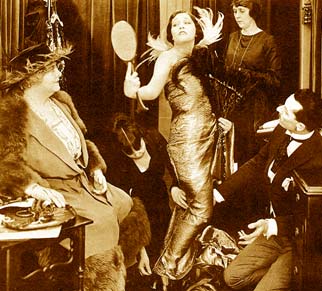
You may ask, where is the contemporary link here? How is this adaptable and humorous to vous? It's funny alright and it's relative. Just as Shakespeare's sex comedies are apropos today, so go the marriage farces of the silent era and the career girl-loves-slacker dude, Judd Apatow films of today. Plain old human nature; only the negligees and the music have changed. There's a lesson for everyone involved; there's also a realization for many. Some men need a mom for a wife and some men don't. Simple. If your goal is to dust them off and dress them up in a sailor outfit, they'll let you know pretty quickly if that's okay. If they already have a mom and want a wife, they'll let you know that, too. Some men need that structure and guidance; they'd be a train wreck without it. Others direct themselves nicely and need a partner to co-pilot with them. Of course, some want a co-pilot who'll simultaneously spoon-feed and navigate while they fly. Those are probably trickiest for the wife. The others are pretty cut-and-dry. I think the Mr. Gordons of the world may need the rare, gin-swilling mom in a sleeveless, backless, transparent, indecent number.
In the end, women, for it does appear men of the '20s had little to learn, are proffered advice that might be heeded by both husbands and wives. My proffering? Men, make your intentions clear; women, don't change your husband. Live by it, laugh at it or rail against it, it suits all well on some level.
"And now you know what every husband knows: that a man would rather have his wife for his sweetheart than any other woman: but Ladies: if you would be your husband's sweetheart, you simply must learn when to forget that you're his wife."
-Why Change Your Wife? - final intertitle
*************************************************************************************************************************
Wondering who the heck Cecil B. DeMille is? Did you read this and think, "I wasn't born in 1920" and therefore couldn't possibly know about people whom lived when everybody walked really fast in newsreels? (Pet peeve of mine, btw. You really can't know about anything or anyone whom existed before your birth year? I know about Mozart, John Dillinger and Edward the Confessor, but ... ) Anyhoo, if you're still bored at work, allow me to introduce you ...
Cecil B. DeMille, for those of you familiar enough with the name, yet unsure as to whether or not he's that dude in your algebraic topology class who always wears the Andy Capp hat and who constantly smells like weed, or if you think you've seen the name on the end credits of a Chuck episode, allow me to school you real quick.
Briefly, Mr. DeMille (professional spelling, as opposed to de Mille, which he used in his personal life), the son of a Columbia University professor and a girls' school headmistress, made seamless and timely transitions from theater and vaudeville in New York to the sunny climes and silent moving pictures of Hollywood and well into the era of the talkies, Technicolor and television. Earning a Best Picture Oscar in 1953 for The Greatest Show on Earth would be an achievement of note; yet, like Thomas Jefferson, who chose to omit "U.S. President" from his epitaph, Cecil Blount DeMille had more than enough to adorn his symbolic epitaph. Founding partner of Paramount Pictures, founder of the Academy of Motion Picture Arts and Sciences, member of the first Board of Directors for Bank of Italy (later to become Bank of America) and founder of Mercury Aviation, the first commercial airline to offer passenger service on a regular schedule, were all virtually accomplished before Yours Truly changed out of her jim-jams this morning.
Above all, DeMille was of that great hybrid: filmmakers, storytellers, auteurs, visionaries and businessmen. Like Shakespeare, Spielberg, Lucas, Edison (Thomas Edison, being one of the industry's first filmmakers: late-19thC.), Allen and Disney, DeMille knew how to tell a story, show a story, produce a story, monetize a story. In the glorious, if not always ethical, early days of Hollywood and its studio system, all but six of his seventy films turned a profit. Known for Biblical, historical and grand-scale productions, he cemented mainstays like Cleopatra, The Ten Commandments, Samson and Delilah, Reap the Wild Wind and The Warrens of Virginia firmly into the groundwork of west coast filmmaking. Unafraid of success and blissfully unashamed of his achievements (a characteristic curiously and frighteningly frowned-upon in this New World Order of 2011), DeMille, like so many a successful titan of any industry, understood the need to evolve and pioneer ahead into frontier territory. Imagine what he might have done in the era of Bill Gates, Google and Netflix.
The Electric Glow of Sex: A JennyPop Christmas Homage
SoCal Feb: The Con (and Bikini) Season Cometh
Cheers, kittens! So, last Hallowe'en I claimed I would post no blog until I finished the fourth title in my Savannah of Williamsburg historical-fiction series. (Fifth title altogether, including The Darlings of Orange County)
Well ...ta dah!
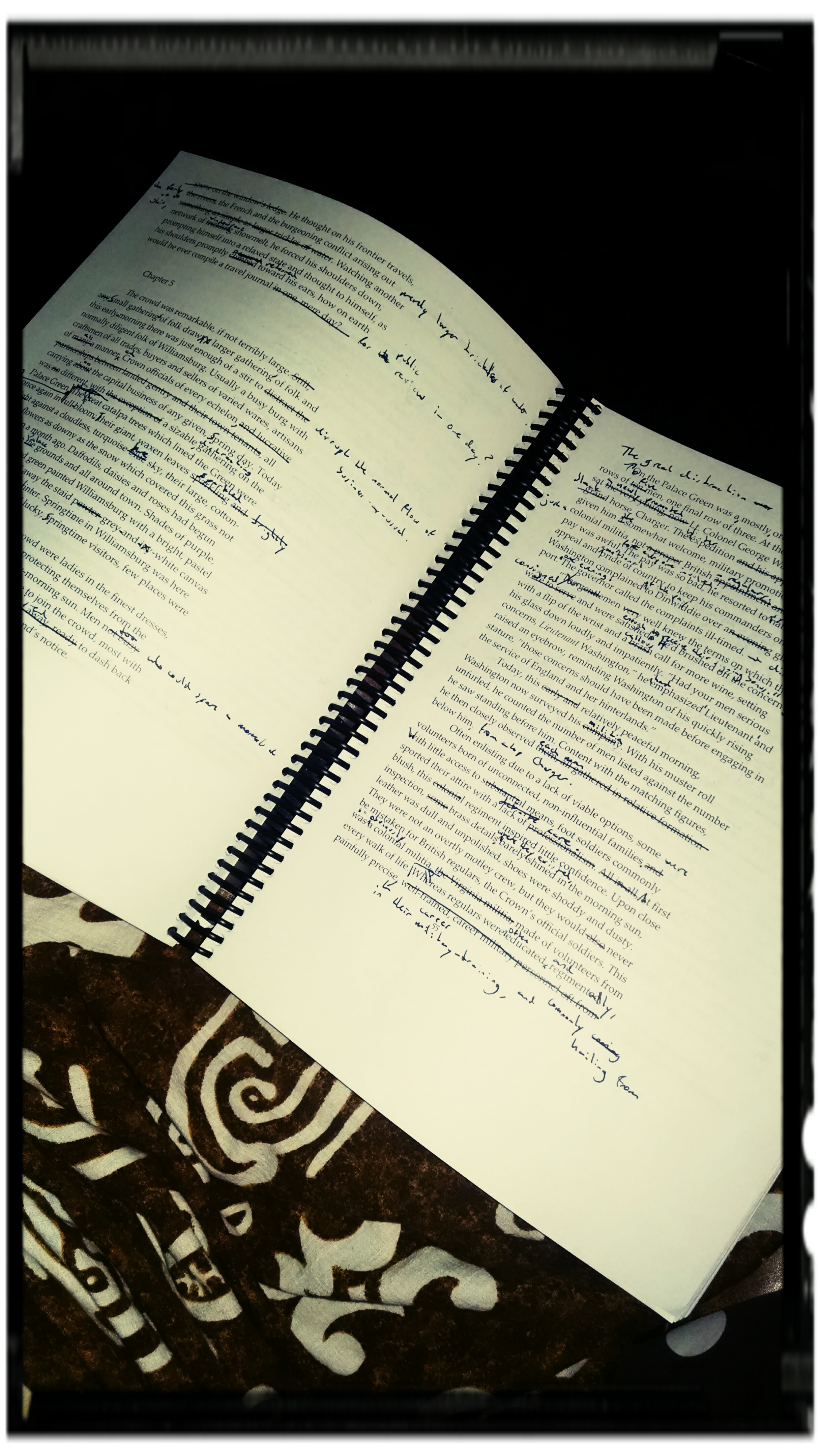
Okay, 'tis a first draft; but, if you've penned any 400-page novels lately, you will appreciate the effort. Editing is in full-swing and I hope to have Savannah of Williamsburg: Washington, Wisdom and the West, Virginia 1754 in your curious little hands by Springtime. As my cheerleaders inspire me, "Go, monkey, go!"
Besides finishing my first draft, 'tis February and around here, Februārius means three things: my Viking's birthday and both con, and bikini, seasons begin in earnest (86 degrees today on the sand and WonderCon is high nigh). The earliest blooms of con season (comic book conventions) are beginning to bud. WonderCon (L.A. Convention Ctr. March 25 - 27, 2016) is just over a month away and the thirty-day mark sounds the costuming alarm.
Natch, by now my costume is decided - Marvel Comics' Agent Carter, the ABC/Hayley Atwell version - and all components have, mostly, been collected; but the one-month point is the time to double-check fittings, assess extra accessory needs and attend to such necessities as salon visits. (One must have bouncy hair at a con!) To boot, I just realized, last night even, that Agent Carter, with her trademark red fedora and navy blue togs does not wear red heels ... she sports blue! Duh! Alarm! Alarm! So, I am now on the hunt for the perfect pair of true-vintage, Post-WWII, blue Mary Janes. I deserve them. I know my value.
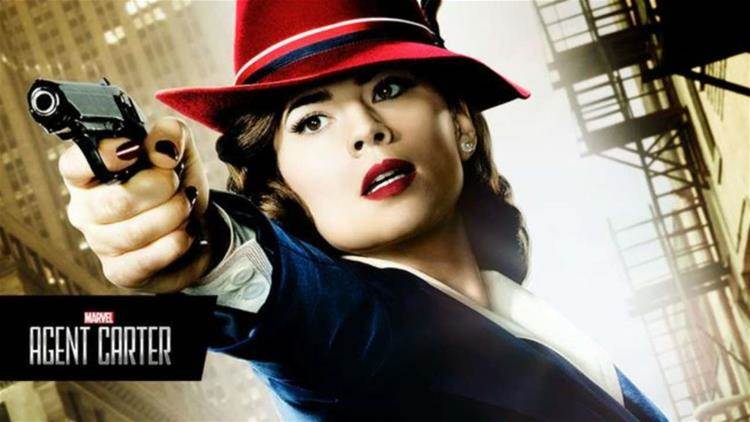
Well then, if you've missed the feathery whippings of my espresso-tipped quill, like those above, fret not, kids. I feel the stirrings which move me to post regularly again and now I have the time, sans that which I should be using to edit Savannah IV. Conversely, though I can barely imagine, if you have not missed my musings and me, or just don't care for my style, it's a big Internet. Move along, Sir or Madam. You shan't hurt my feelings.
If you are a geek, and, don't kid yourself, you are if you've continued this far, follow me here and at GoodToBeAGeek.com where, every Con Season (WC & SDCC) I post all the geeky, gooey, con goodness you need, including fabulous costuming pix by my partner-in-crime and our own photographer and costume designer Dr. Lucy of Twisted Pair Photography and Sea Gypsy Designs.
Apropos to the continuation of con season, even if you don't follow my novels or regular posts, be certain to check back this summer for SDCC coverage, including Preview Night! (San Diego Comic-Con, S.D. Convention Ctr. July 21 - 24, 2016). BTW, for devoted readers, yes, I am writing another article for the Official SDCC Souvenir Book! This year's theme? 75 years of Archie Comics. My focus? Betty & Veronica, of course! Who's your fave Riverdale gal? LMK @JennyPopCom!
Abyssinia on the Con Floor, Kids!
JennyPop's other Official SDCC Souvenir Book articles on Peanuts, Tarzan, The Simpsons, Hellboy and Catwoman can be found ... here! Read them all or take your pick! Want to read past coverage of WC and SDCC? Just type WonderCon, SDCC or Comic-Con into the search bars at any of her sites!
goodtobeageek.com (Where I write as Miss Hannah Hart, ghostdame of The Del)
Get Wiggy With It: Victoria and Albert App
Perchance online games like Zombie Pop or Candy Kill are befuddling to you. Why would someone spend any valuable time poking zombies or slashing gumdrops? Of course, when powdered wigs and the 18thC. come into play, why, that is clearly time well-spent! If one happens to be an historical-fiction novelist, it can even be classified as research. Yes. Research.
So, finally an app for us fashion/history/research dorks! Courtesy of London's Victoria and Albert Museum ... "Design a Wig" app! If you have fifteen minutes, play with it and amusez-vous bien! (If you do not have fifteen minutes for happy silliness, maybe rethink some priorities.)
Enjoy JennyPop's own digital creation: one I imagine our Miss Savannah of Williamsburg (during her Blackbeard-phase) would adore! Ta! Merry Christmas, all!
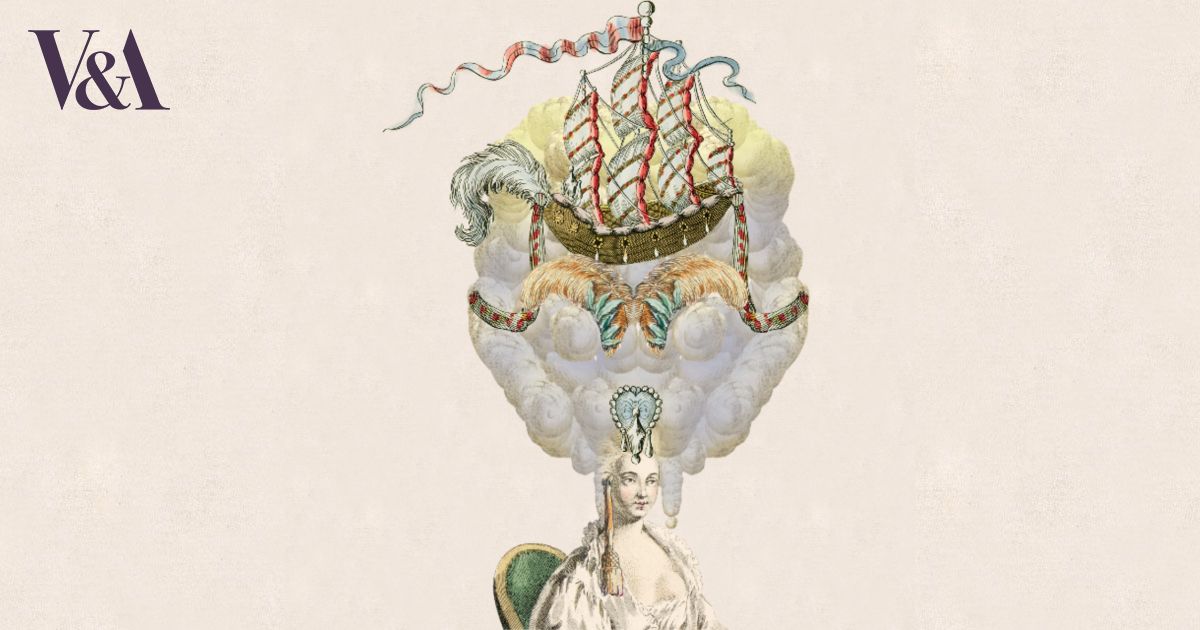
No Blogs 'til Brooklyn! Happy Hallowe'en, though!
Happy Hallowe'en to all!
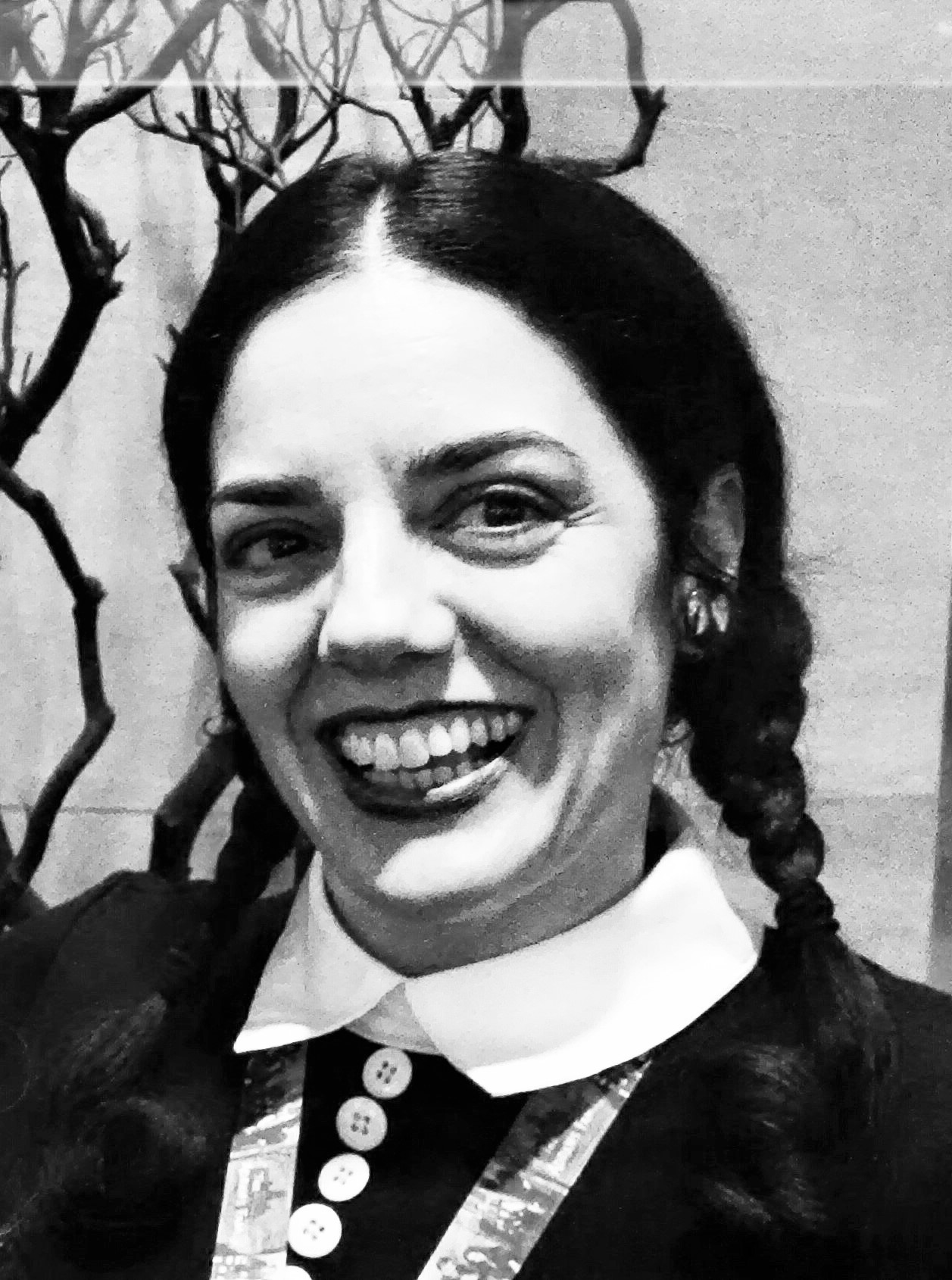
"Where, oh, where have all the Jennifers gone?" I've been asked by a long-time reader, as it regards my dereliction of blogging duties. My latest blogs, it seems, date back to this summer: San Diego Comic-Con 2015. Yet, as I declared to my Viking yesterday, with the ferocity and conviction of Braveheart, "I shall Tweet, but I shall not blog until I finish this damn book!"
Yes, finally on the last chapter of Savannah of Williamsburg IV (working title), I am überfocused. (Need to catch up on Savannah of Williamsburg I-III? You still have time.) Nevertheless, my focus does not mean I could snub my fave holiday and let Hallowe'en pass without some form of post. Ergo, I give you Le Grand Citrouille!
This sporty, spooky, Candy Corn-hued V-dub was spotted, par Moi, parked near a Carlsbad, CA beach. Clearly this Québécois merveilleux shares a Peanuts-love the world over.
Long live The Great Pumpkin! Vive Le Grand Citrouille!


BTW, you can always enjoy JennyPop's fave Hallowe'en post, any year, even this year! "Aren't You A Little Old For Hallowe'en?" A costume recollection and Jenny's fave Hallowe'en TV, film and lit.
@JennyPopCom #WednesdayAddams #cosplay #VW #Halloween
Mary Pickford: Sink Nap
Because I find this snapshot of Mary Pickford, washing her hair in a sink, quiet, relaxing and soothing. As comic-convention season approaches (WonderCon, San Diego Comic-Con and all the costuming, writing, socializing and cocktails that accompany this glorious time of the year), a nap in a Hilton sink may very well be in my future.
Happy Thursday, everyone!
